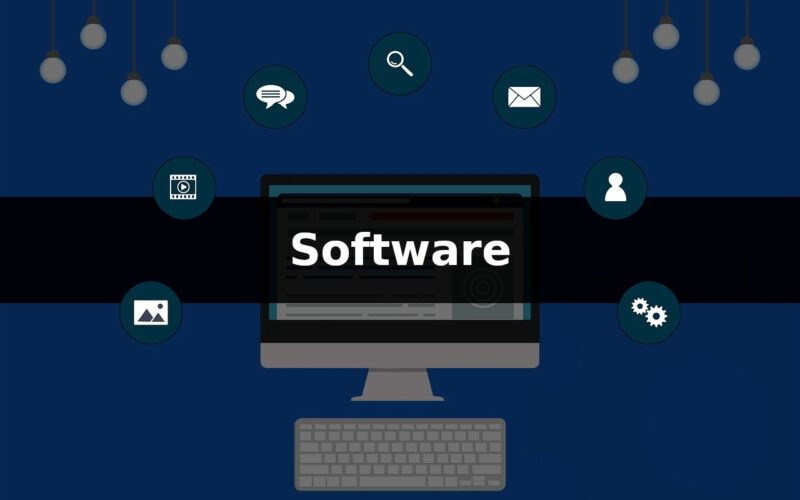What is Software?
Discover what software is and how it is essential for the functioning of computers and electronic devices

Software is a term used to refer to computer programs, that is, a set of logical and sequential instructions that are executed on a computer or electronic device to perform a certain task or function. Software is composed of source code, which is written by programmers using programming languages, and can be translated into machine code, understandable by computers, through compilation or interpretation processes.
There are different types of software, including operating systems, productivity applications, entertainment programs, security software, games, among others. Each type of software has a specific purpose and offers different functionalities.
Software plays a fundamental role in the functioning of modern computers and electronic devices. It allows users to perform a wide variety of tasks, from creating documents and accessing the internet, to playing music and videos, playing games, managing data, and more. Software is one of the main elements responsible for the usefulness and versatility of computers and electronic devices today.
Easy to understand software
Software is a set of instructions and computer programs that allow a device, such as a computer or smartphone, to perform specific tasks. Think of it as a set of rules that tell the computer what to do.
Just like you follow recipes to cook a dish, software provides a set of instructions for the computer to perform a task. These instructions can range from something simple, like playing music, to something complex, like editing videos.
Software is developed by programmers who write code using programming languages. The code is then compiled or interpreted by the computer, meaning it is translated into a form that the device can understand and execute.
There are different types of software such as operating systems, productivity applications, games, web browsers, and more. They are essential for the functioning of the electronic devices we use in our daily lives.
In short, software is like a set of rules or instructions that tell the computer what to do, allowing it to perform specific tasks for us.
Types of software
There are different types of software, each with different characteristics and purposes. Here are some of the main types:
1. Operating Systems
Operating Systems are programs that control and manage the hardware resources of a computer or device, allowing interaction between the user and the system. Examples include Windows, macOS, Linux, and Android.
Examples of Operating Systems:
- Windows (Microsoft)
- macOS (Apple)
- Linux (various distributions, such as Ubuntu, Fedora, Debian)
2. Application Software
Application Software are programs designed to perform specific tasks for users. These may include word processors, spreadsheets, image editing programs, media players, web browsers, among others.
Application Software Examples:
- Microsoft Office (Word, Excel, PowerPoint)
- Adobe Photoshop (image editing)
- Google Chrome (web browser)
- Mozilla Firefox (web browser)
- Spotify (streaming music playback)
- Adobe Premiere Pro (video editing)
3. Development Software
Development Software are tools used by programmers to create, debug, test and maintain other software programs. Examples include integrated development environments (IDEs), compilers, debuggers, code editors, among others.
Development Software Examples:
- Visual Studio (Microsoft)
- Eclipse
- IntelliJ IDEA
- Sublime Text
- Visual Studio Code (Microsoft)
- PyCharm
4. Database Software
Database Software are programs designed to create, manage and manipulate databases. They enable the efficient storage and retrieval of large amounts of information. Examples include MySQL, Oracle, Microsoft SQL Server.
Examples of Database Software:
- Oracle Database
- MySQL
- Microsoft SQL Server
- PostgreSQL
- MongoDB
5. Network Software
Network Software are programs that facilitate communication and sharing of resources on a computer network. This includes network operating systems, routers, firewalls, communication protocols, among others.
Network Software Examples:
- Cisco IOS (network operating system)
- Wireshark (network traffic analysis)
- Cisco Packet Tracer (network simulation)
- PuTTY (SSH and Telnet client)
6. Security Software
Security Software are programs designed to protect computers and networks against threats such as viruses, malware, cyber attacks and unauthorized access. Examples include antiviruses, firewalls, intrusion detection programs.
Security Software Examples:
- Norton Antivirus
- McAfee Antivirus
- Avast Antivirus
- Malwarebytes (antimalware)
- Bitdefender Antivirus
7. Games
Games are interactive entertainment programs, developed to offer fun to users. They can run on different platforms such as computers, video game consoles or mobile devices.
Game Examples:
- Fortnite
- Minecraft
- League of Legends
- The Legend of Zelda: Breath of the Wild
- Super Mario Odyssey
These are just a few examples of the types of software available. The software industry is broad and diverse, with many categories and subcategories that serve different needs and goals.
How software depends on hardware
The software depends on hardware to execute its instructions and perform its functions. Hardware consists of the physical components of the computer or electronic device, such as processor, memory, hard drive, motherboard, among others.
The relationship between software and hardware can be explained as follows:
- Execution of instructions: The software is composed of a set of logical instructions written in programming languages. These instructions are translated into machine code, which is understandable by hardware. The hardware processor executes these instructions, performing calculations, processing data and manipulating information according to what was programmed.
- Hardware resources: Software can use hardware resources to function. For example, video editing software can take advantage of the processor’s processing power to speed up the processing of effects and transitions. Similarly, gaming software can take advantage of the graphics power of the video card to render advanced graphics.
- Interaction with peripherals: The software depends on hardware to interact with peripherals, such as keyboard, mouse, monitor, printer, among others. The software sends and receives electrical signals from the hardware, allowing the user to provide input to and receive output from the system.
- Data storage and access: Hardware, such as the hard drive or memory, is responsible for storing and accessing the data used by the software. The software reads and writes information to storage hardware, allowing data to be persisted and accessed later.
In short, software and hardware are interdependent. Software needs hardware to execute its instructions, use resources, interact with peripherals, and store data. In turn, the hardware depends on the software to receive the necessary instructions and operate according to the desired purpose. It is a symbiotic relationship between the two, in which one cannot function properly without the other.
Summing Up Software
In short, software is the set of instructions that allows computers and electronic devices to do what we want. It is a fundamental part of the technology we use on a daily basis and makes it possible to carry out various activities efficiently and effectively.
